One cannot help but be fascinated by the oddly shaped domes on top of Orthodox and Eastern Catholic Churches. In fact, sometimes they are absolutely dazzling in the midday sun. Here are a couple good examples of what I mean. Brilliant!
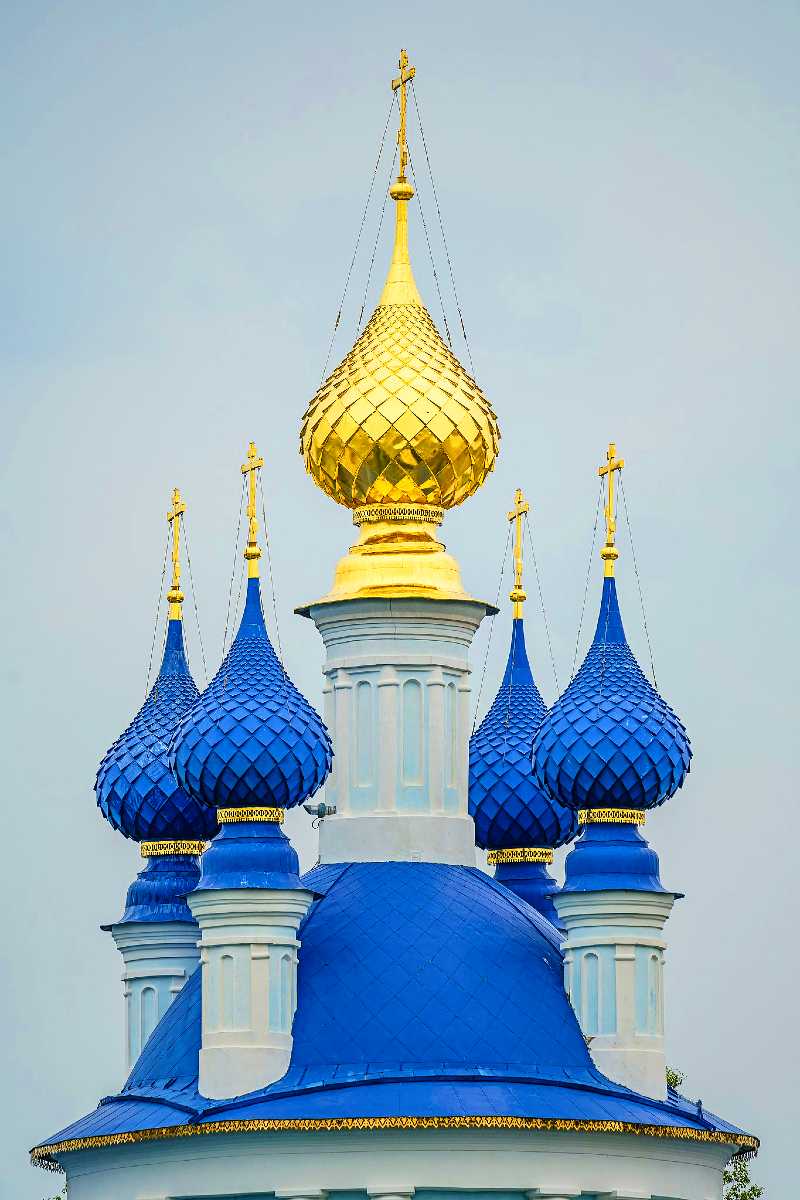
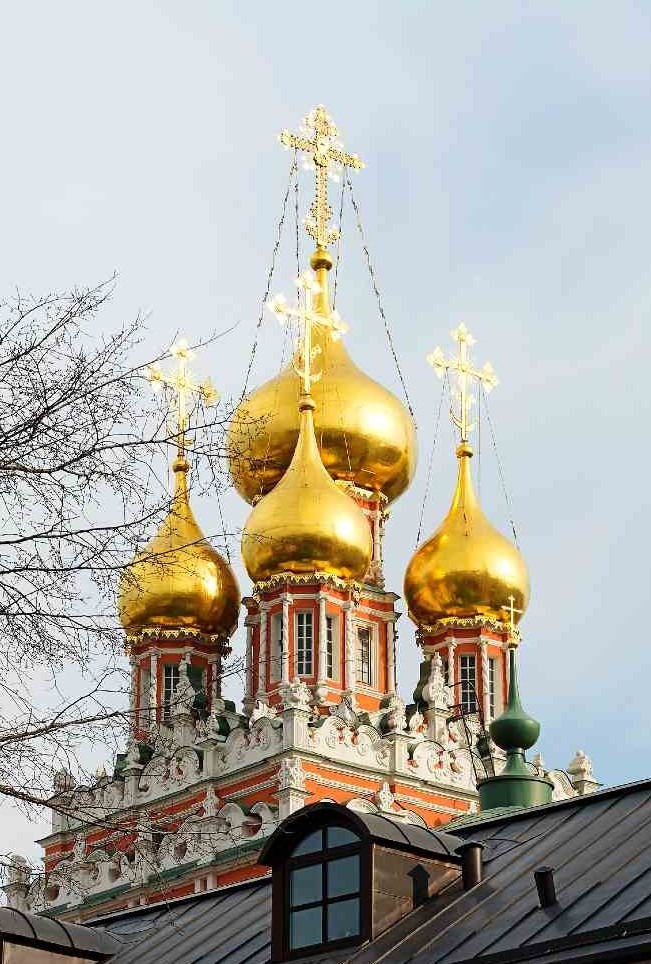
They are called “onion domes” for the simple reason that they look like onions perched in top of towers. As we will see, their mystical significance is much deeper than the humble vegetable.
A Mystery
The real fascination, however, is that these domes exist at all! Who invented the idea of a church dome shaped like an onion? The gothic spire and the renaissance bell tower seem like natural crowns for churches. But an onion?
Even from an engineering point of view, how do you create a stable bulbous structure with a smaller base than its wide body that also culminates in a pointed top like a Hershey’s kiss?! A real mystery, it seems.
This unusual architectural phenomenon has some history behind it, as you might imagine. Actually, the design is close to a thousand years old and did not originate in Christianity (although I believe the Christian church gave the onion dome its greatest meaning and form.)
Quick Dome History
Domes as such are probably as old as developed human culture and were well known to ancient civilizations, as witnessed by structures like the Pantheon in Rome. 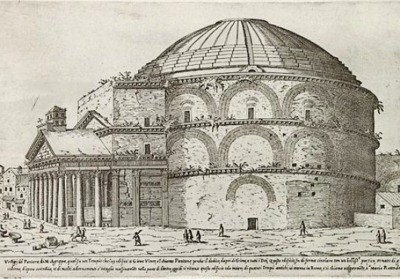 We normally think of the Pantheon as a tourist attraction, but it was originally a pagan temple, underscoring the fact that domes were the ideal structures for worship, even in the pagan world.
We normally think of the Pantheon as a tourist attraction, but it was originally a pagan temple, underscoring the fact that domes were the ideal structures for worship, even in the pagan world.
In Christianity, the dome depicts heaven especially through its decorated interior representing the vault of the sky, which would give form to the upward aspirations of the human soul. But there were also two practical purposes for domes:
1/ they are acoustically resonant, creating an ideal atmosphere for hymns and religious music, and
2/ they made it possible to have a wide expanse of open space without the columns that are needed for flat roofs.
If you think about it, modern temples of worship are also round domes. Just envision sports stadiums and Las Vegas casinos (have you seen the garish but fascinating structure called The Sphere at the Venetian just off the LV Strip?—oh my goodness), etc. The dome as pagan worship center is an enduring metaphor throughout history.
The great Persian dynasties that flourished after the fall of the Roman Empire (from the AD 500s and beyond) figured out how to put a round dome on top of a square structure. They just placed diagonal supports at the four corners of the square to create an octagonal frame that could support a round dome. Pretty smart if you ask me.
Islamic Influence
But the onion dome shape itself comes from Islam, at least originally. The most famous examples of these are the Dome of the Rock in Jerusalem (built 695 AD, not quite a full onion dome) and the Taj Mahal in northern India, built about a thousand years later (1648). The latter has a clearer onion shape.
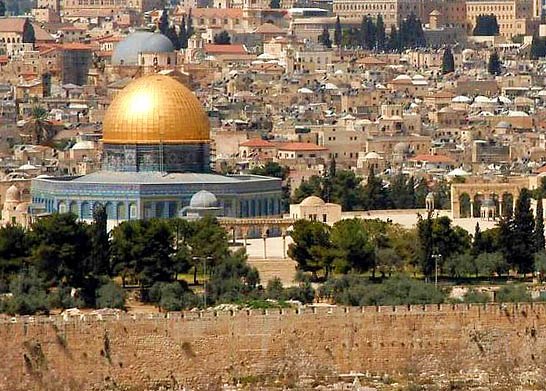
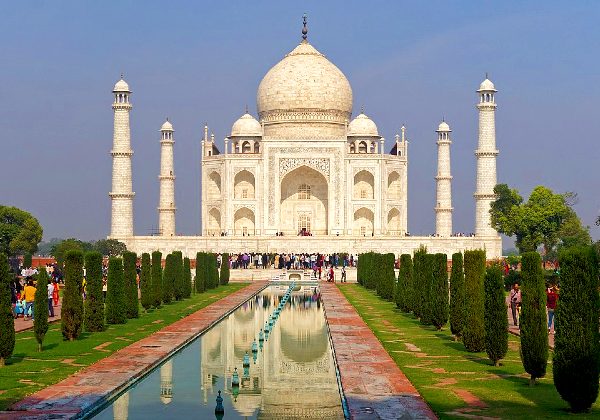
We can’t give a precise year when the onion dome took form in the East, but there is a historical marker that shows how it came to be in the West. The Mongol invasion of Europe (1220s to 1240s) had a potent effect on western civilization. You may have heard of a guy named Genghis Khan?
For our purposes, we’ll focus on all the onion domes that sprang up after the great Mongol died (1227) and try not to notice the horrific slaughter and pillaging on his rampage through Eastern Europe (mostly modern day Russia). As a side note, Khan once told a leader pleading for mercy:
“I am the punishment of God. If you had not committed great sins, God would not have sent a punishment like me upon you.”
Frighteningly, I don’t think he was kidding. Old Genghis had a strong sense of his personal destiny and very little sense of humor. Anyway…
Historical studies indicate that prior to the Mongol invasion there were few if any churches with onion domes featured on icons. After the invasion, however, they became a regular feature of Russian iconography and geography.
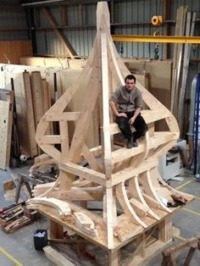 Architecture
Architecture
How do they build these complex structures? I must humbly admit that I have absolutely no idea!
If I could read Russian, I might have been able to track down a few technical internet sources for onion dome construction, but we’ll have to settle for a few images to paint a picture of the process. Let’s just say that building one of these domes is no easy task.
Spiritual Meaning
The real meaning of an onion dome, however, is spiritual. As is true of most religious architecture, there is a deep symbolism to the structure, and this one is absolutely wonderful:
Onion domes symbolize flames on top of candles that burn with zeal for Christ and for the life of Heaven.
So simple. Yet, once you get that symbolism, you tend to see these brilliant religious symbols with different eyes.
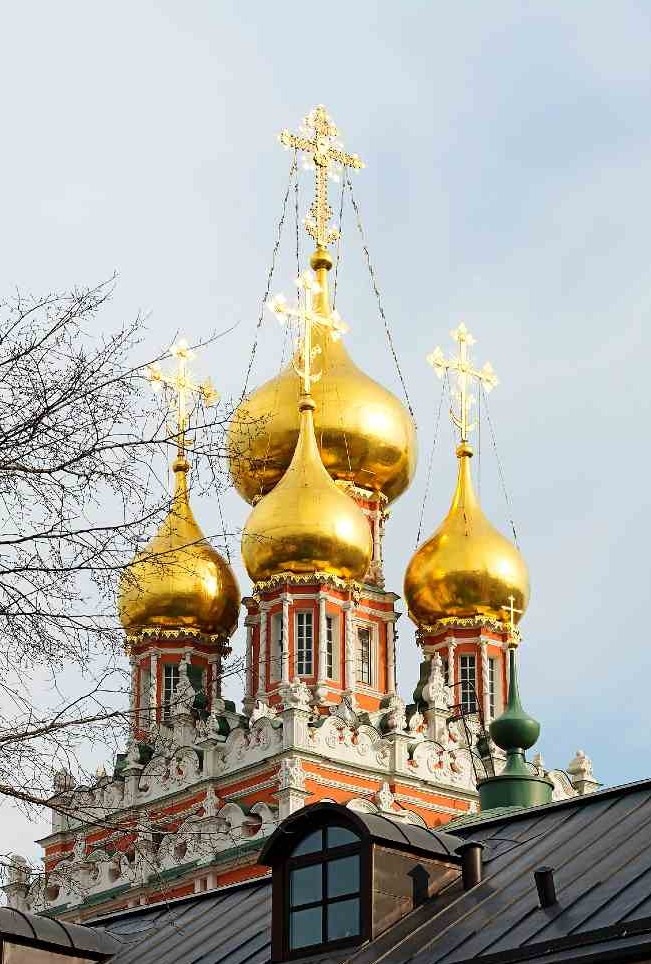
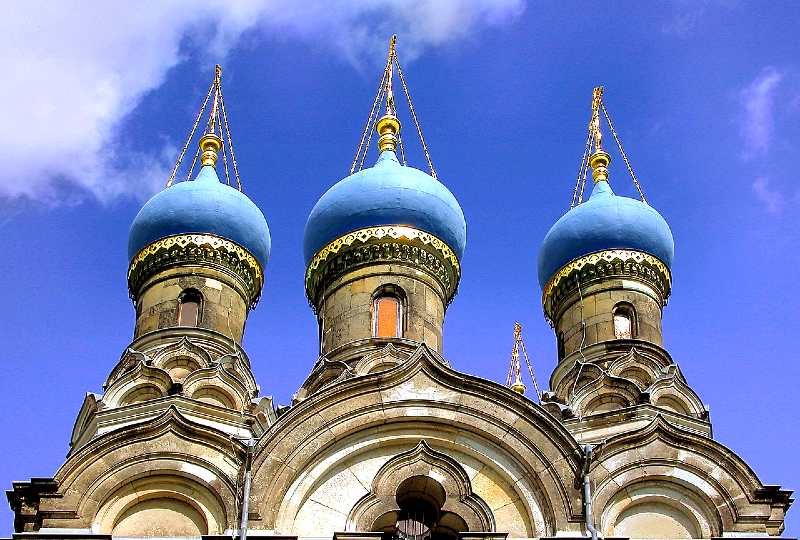
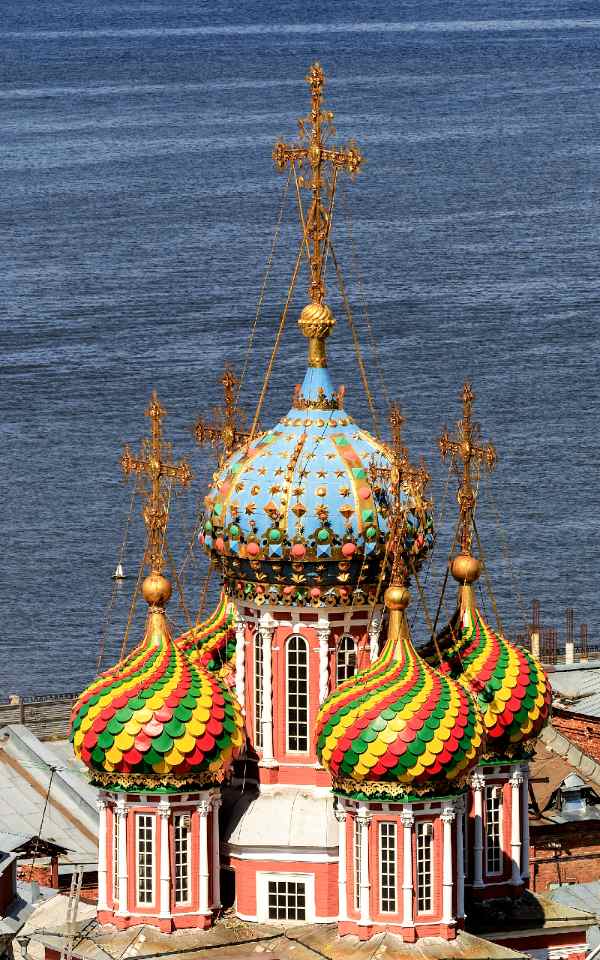
The famed Ivan the Great Bell Tower in Moscow (image below: built in 1508) may be the perfect exemplar of the “candle” motif. It stands next to Assumption Cathedral in the Kremlin.
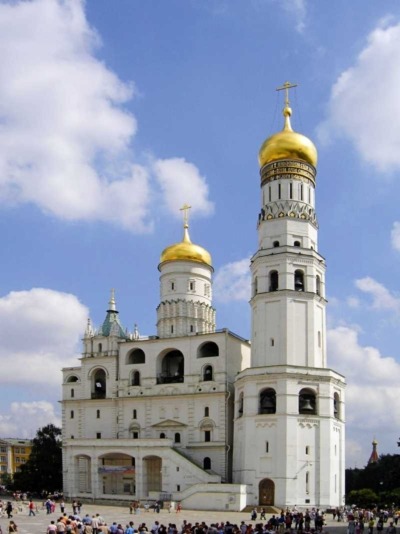 Number and Color Symbolism
Number and Color Symbolism
The symbolism of number and color augments the flame symbolism of these domes, just as fire can take many forms and manifest itself in various colors.
- 3 domes, of course, represent the Holy Trinity;
- 4 domes symbolize the 4 Evangelists (Matthew, Mark, Luke, and John), while
- 5 domes represent Christ (as the largest dome in the middle) with the 4 domes of the Evangelists surrounding Him;
- Ten domes represent the Ten Commandments; and
- Twelve or thirteen domes represent the Apostles and Christ in the midst of them.
We’ll see examples of these below. Some eastern churches have even had as many as 25 domes symbolizing the 12 patriarchs, the 12 apostles, and Jesus in their midst!
The color symbolism is a matter of local preference and spiritual meanings, but some colors are standard.
- Blue, for example, is traditionally and universally associated with the Blessed Virgin Mary;
- Green generally signifies a church dedicated to a Saint or Saints;
- Gold is an attribute of God’s glory and His angels; and
- Black or Silver is usually found on monastery churches. (The last picture of this group is a colorized photo from 1909 of a church that was torn down during Communism.)
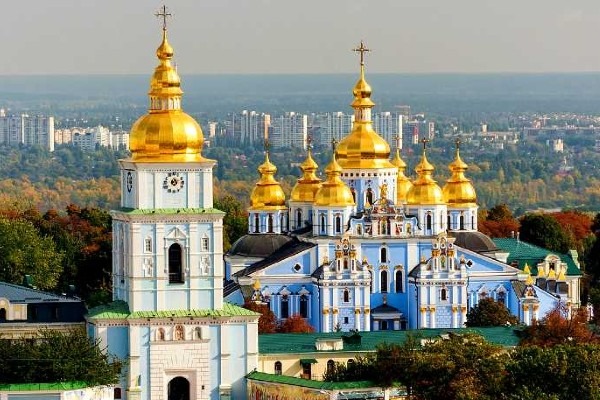



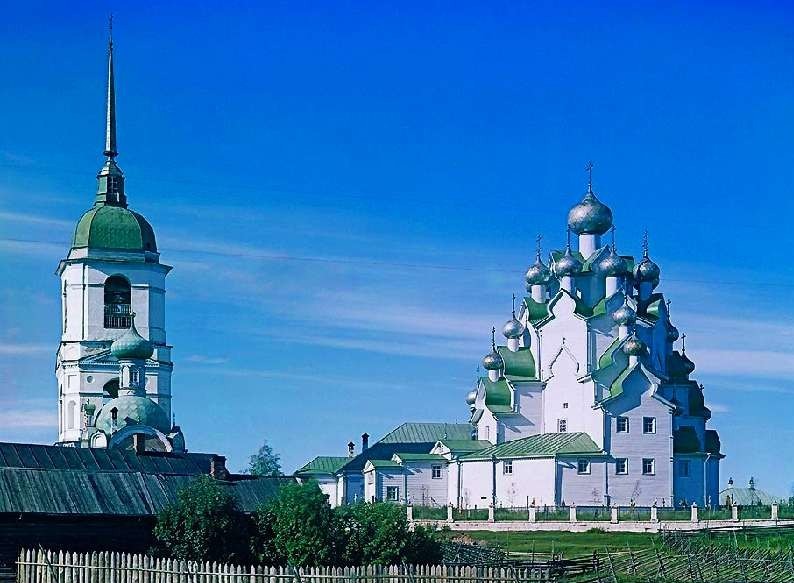
The Crown Jewel
Ironically, the crown jewel and most beautiful of onion dome churches was created by a terrible man. That would be the Russian emperor, Ivan the Terrible (1530-84), to be specific. But don’t be fooled by the moniker: the guy was probably one of the first victims of fake news.
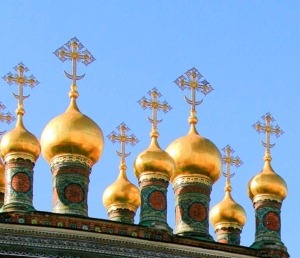 In Russian, the epithet “terrible” actually means “powerful” or “formidable” but, as English speakers, we immediately default to the sense of “evil” and “awful” when we hear the word “terrible.” I’m told that Vladimir Putin wants to correct that terrible American slander against his esteemed predecessor.
In Russian, the epithet “terrible” actually means “powerful” or “formidable” but, as English speakers, we immediately default to the sense of “evil” and “awful” when we hear the word “terrible.” I’m told that Vladimir Putin wants to correct that terrible American slander against his esteemed predecessor.
To commemorate his victory over the Islamic Tartars in 1552, Terrible Ivan did two things: he decreed that all crosses on top of Christian churches would henceforth be situated above the crescent moon (symbolizing the defeat of Islam in his territories); and, he built two churches at the Kremlin, the most magnificent of which is the Crown Jewel of all onion domed churches: St. Basil’s in Red Square.
The Wonder of St. Basil’s
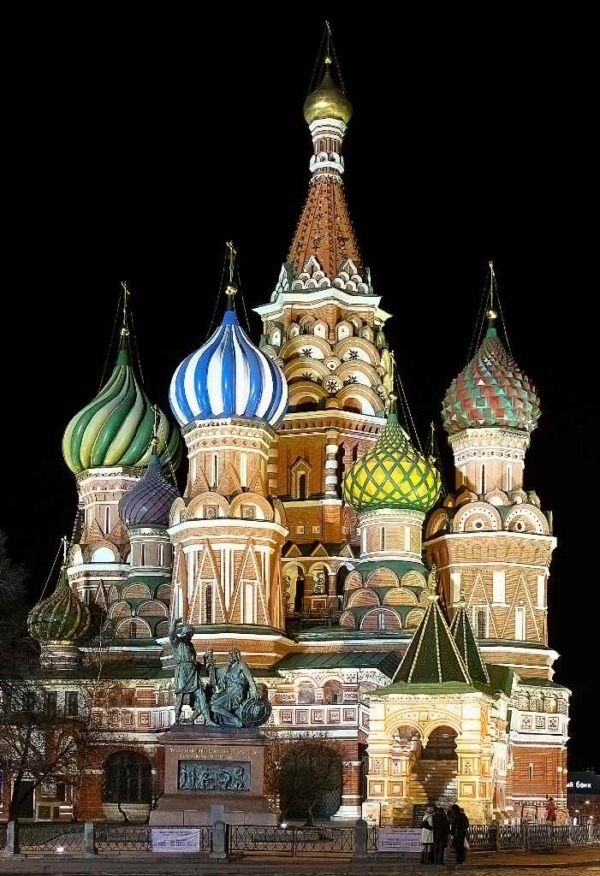 They sometimes call it a cathedral but it is not the seat of a bishop. Catholics would call it a basilica, and it is really one of the great religious wonders of the world. Here are a few quick facts about it:
They sometimes call it a cathedral but it is not the seat of a bishop. Catholics would call it a basilica, and it is really one of the great religious wonders of the world. Here are a few quick facts about it:
- It’s real name is the Cathedral of the Intercession of the Most Holy Theotokos on the Moat; it is one of 9 churches in or around the Kremlin;
- It is commonly called St. Basil’s because it houses the tomb of a Russian Orthodox saint named Vasily (Basil) who lived in the same era as Terrible Ivan and was known as a miracle-worker and prophet;
- Vasily is said to have rebuked the Emperor for not paying attention during church services (with behaviors like that it’s no wonder the saint was called a “Fool for Christ”—even more miraculous that he lived to 88);
- The church was constructed between 1555 and 1561 but they finished adding the fabulous colors to the domes only in 1683.
- St. Basil’s features 9 domes, with eight smaller domes situated around a major dome on a tower jutting up from the center. (The symbolism would be 3-3, three times the Trinity, a perfect number). The 8 domes crown 8 separate chapels inside the building.
- There is a legend (believed to be apocryphal) that the Emperor Ivan blinded the architect after he built the church so that he could never build another church to rival it—giving credence to those who say that the moniker “terrible” was not actually fake news. We have Facebook fact-checkers looking into it as we speak.
 On a personal note, I will never forget my visit to St. Basil’s in the early 2000s, not only because of its beauty but because I experienced a blessed moment when a group of 4 singers (probably seminarians) chanted a capella music in one of the chapels of the church. (See my home video clip below.)
On a personal note, I will never forget my visit to St. Basil’s in the early 2000s, not only because of its beauty but because I experienced a blessed moment when a group of 4 singers (probably seminarians) chanted a capella music in one of the chapels of the church. (See my home video clip below.)
Because it was built in an era before modern steelwork, the walls needed to be very thick to hold up all those domes. Consequently, the interior spaces seem to be very constricted. But the designers didn’t hesitate to fill all the walls with icons and religious art, which adds to the unique beauty of its exterior.
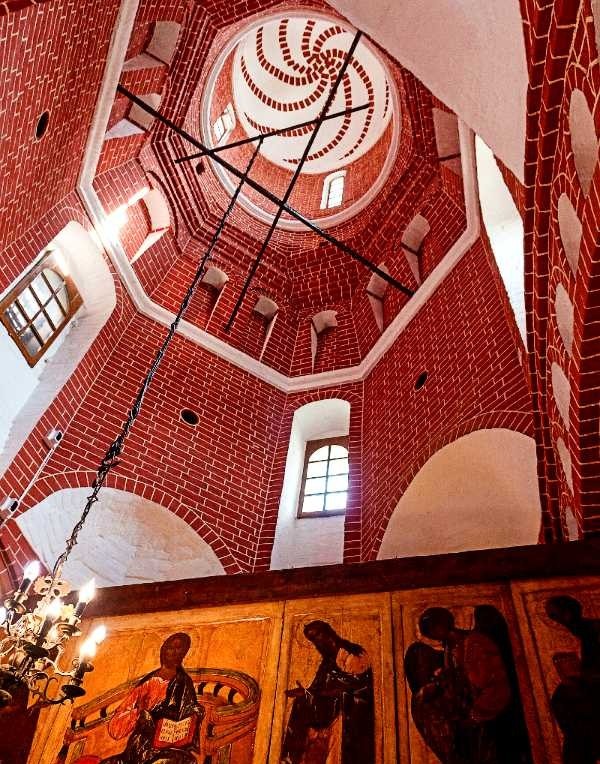
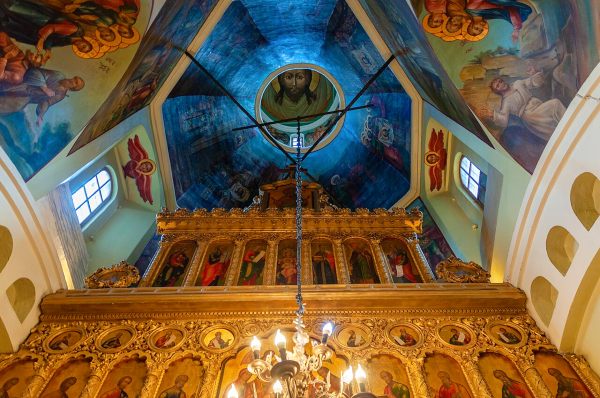

A Sacred Window
So, as you can see, onion domes are not about onions at all. They’re sacred windows glorifying God in a brilliantly colorful and elegant way.
None does that better than St. Basil’s, which stands tall on the edge of Red Square to this day like a kaleidoscope of candles whose domes and chapels witness to the One who called Himself “the Light of the World.” Amen.
Two Russian Hymns
Seminarians in St. Basil’s
Anastasia Gladilina and Monks of Sretevsky Monastery
———-
[Note: This article is a reproduction of the Sacred Windows Email Newsletter of 5/23/25. Please visit our Newsletter Archives.]
Blue and Gold (A.Savin); Gold with tree (Andrey Korzun); Pantheon (public domain); Architecture (Copper exterior / interior); St Basil’s at Night (Petar Milošević); St. Basil’s with Rainbow (Leokand); Interior of St. Basil (tower, dome, hall); Genghis Khan Statue (Munkhzaya.E); Cross over Crescent (Ludvig14); Man sitting on frame; Frame; Green church (Mike1979 Russia); Three blue domes (Jörg Blobelt); Black domed Monastery (Александр Байдуков); Blue Cathedral (Ted.ns); Gold domed Monastery Kyiv (Rbrechko); Gold with support wires (НатальяКазарина152); Multi-colored dome (A.Savin); Ivan the Great Bell Tower (Gérard Janot); Taj Mahal with reflecting pool (Jakub Hałun); Dome of the Rock (Wayne McLean).
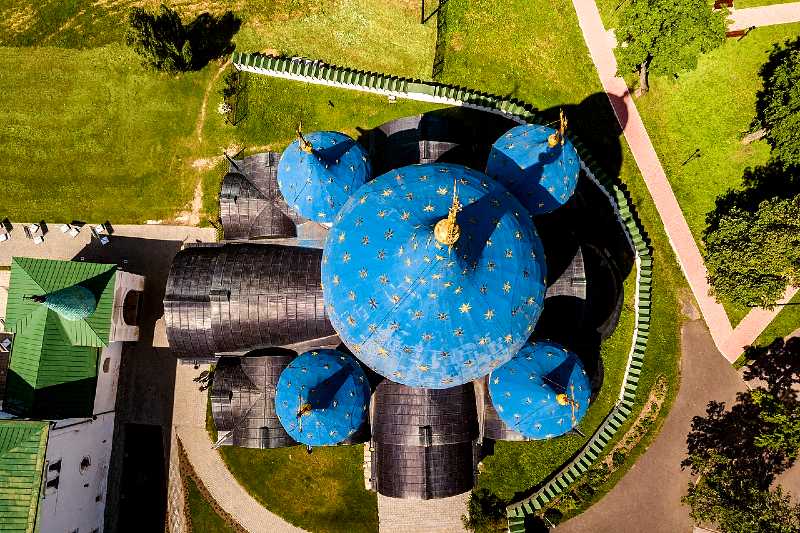
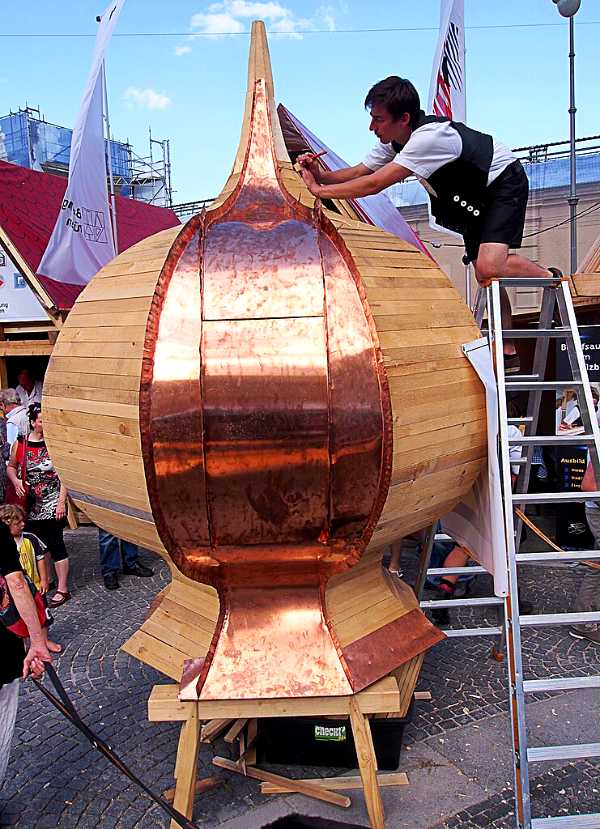

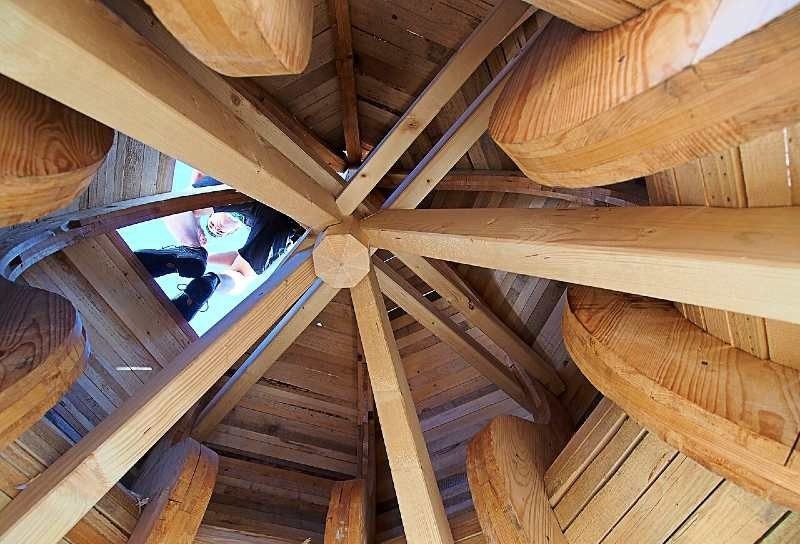
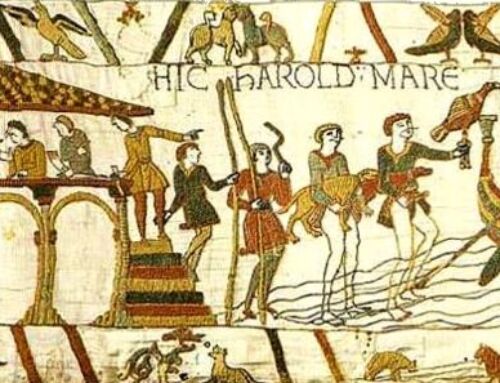


Leave A Comment